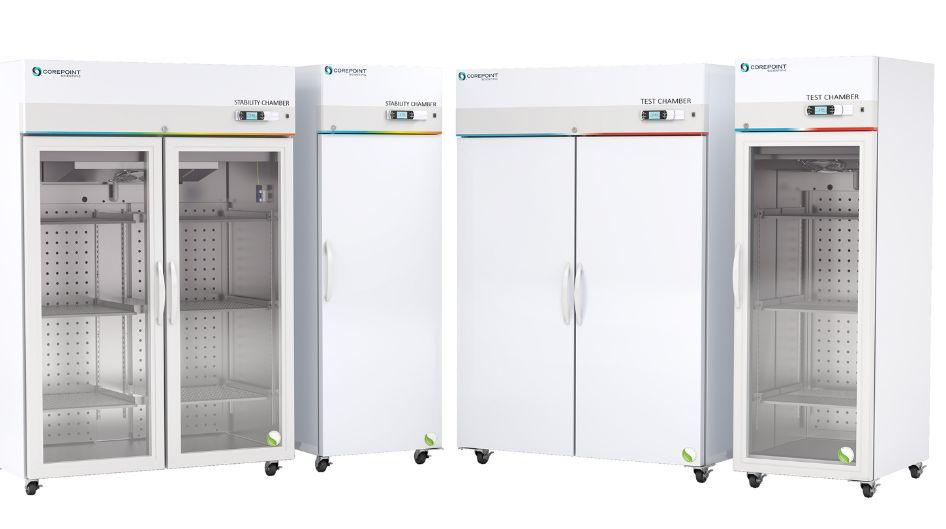What are environmental testing chambers?
Have you ever wondered how testing chambers work? Or why it’s important to test products in different environments? Today we’re going to explore why test chambers are significant, and how they’re used in the world today.
Let’s start with a definition: an environmental test chamber is essentially a climate-controlled cabinet. The enclosed space of the chamber simulates different environmental conditions and tests how a product reacts in those conditions.
Researchers depend on environmental test chambers to determine a product’s reaction to moisture, temperature, and other environmental variables. Environmental testing reveals the product quality and durability. Environmental chambers provide this information by simulating real-world results.
How do testing chambers work?
Modern test chambers can measure everything from humidity conditions to salt spray corrosion. The type of environment being produced will depend on the variable being tested. Temperature test chambers utilize heat pumps or refrigeration systems to produce different temperature variations. Some can produce quite extreme temperatures through these heating and freezing elements. Humidity test chambers use steam generators to add or remove moisture and create varying temperature and humidity conditions. Air dryers, in turn, can lower the relative humidity. Salt spray chambers can simulate saltwater environments by using salt spraying solutions that enter the chamber through a compressed air tank. Some test chambers even simulate thermal shock.
As you can see, environmental test chambers can produce almost any atmospheric condition imaginable.
What are test chambers used for?
Environmental test chambers serve manufacturers by making sure their products are safe and effective before heading to market. Test chambers are used across many industries—from automobiles to electronics to cosmetic products. Test chambers are also crucial for the pharmaceutical and food industries, since food and pharmaceutical drugs must meet FDA requirements.
Temperature and humidity chambers are also used in microbiology. These chambers enable scientists to study the effects of humidity, lighting, heat, and other conditions on soil and living organisms. Custom test chambers in scientific laboratories can even test the life span of cells or monitor tissue growth. The aerospace industry also uses test chambers. This industry tests products through a thermal vacuum chamber—a specific testing chamber producing conditions that mimic space.
More examples of test chambers include battery test chambers, altitude chambers, vibration testing chambers, thermal shock chambers, and chambers for product stress tests among others. Test chambers are used on medical equipment, electronics, food processing, consumer products and more.
Manufacturers across all industries need to test their products, and test chambers are built for the task.
The Different Types of Climatic Test Chambers
As described above, many types of test chambers exist. But in this vast array, there are really two main categories of tests performed—dynamic and climatic. What’s the difference? One manufacturer, Qualitest, says that—”climatic tests include air pressure, humidity, temperature and light…dynamic tests are focused on vibration, rotation and shock.”1 Today we’ll focus on climatic testing and the segments within this category.
Climatic Testing: Mapping External Conditions
Since there are nearly endless environmental conditions to simulate, you can imagine the great variety within climatic test chambers. Most common is temperature and humidity testing to test temperature and moisture extremes. But some climatic chambers conduct very specific tests such as ultraviolet and xenon aging tests.
Shelf life testing and controlled temperature storage is another huge sector of climatic testing.
At the end of the day, each climatic test chamber has one key function—it tells us how a product handles external atmospheric conditions. Simple test methods can reveal a world of data about the integrity and performance of a product. Two of the largest categories of climatic chambers are temperature test chambers and humidity stability chambers. We’ve already looked briefly at temperature test chambers, so let’s look at stability chambers below.
Stability Chambers
Stability chambers are like a control room. They have one goal—to keep all external conditions stable while each variable is tested on a product.
One of the most common types of stability chambers is the humidity stability chamber. Humidity chambers provide insights on how humidity levels affect the structural integrity of a product. A humidity test chamber is designed to gauge corrosion warping, cracks, and deficiencies in products.
Data obtained through humidity testing allows engineers to uncover product weaknesses and invent efficient solutions. Temperature and humidity chambers expose how fast a product breaks down or deteriorates in humid environments under exact specifications. The humidity range of these chambers can vary between 10% and 100%.
The Benefits of Product Testing
The benefits of product testing are abundant. Product tests catch defects like product decay, degradation, product performance flaws and material weaknesses. Product tests also confirm quality assurance and validate safety features, ensuring that all product components function as they should.
Some companies use product test results to develop a prototype or proof for a new product. These tests help manufacturers verify their new innovations and keep an edge over other competitors in the market. Testing is a huge part of research and development. Products that forgo testing can be costly, inefficient, and even unsafe.
What features should you look for when buying an environmental test chamber?
The features you should look for in environmental testing chambers will depend largely on your industry and what environmental conditions you want to test. Your industry will likely already have guidelines and standard best practices for the type of product you’re testing.
If you’re still unsure what test chamber to look for, ask yourself a few questions. Are there typical weaknesses in the product you’re producing? What safety factors should you test in case your product malfunctions? Would your product materials be affected by environmental conditions?
Identify weaknesses and potential pitfalls, and then select a chamber to test these specific variables. A simple temperature chamber is a great place to start if you need basic data on the temperature ranges a product can handle. Shelf life testing often requires humidity tests, so consider a humidity stability chamber if this fits your need.
Wrapping up Environmental Test Chambers
Environmental test chambers are incredible machines. As we’ve discovered, they can mimic temperature extremes, thermal shock, humidity environments, altitude and more.
Test chambers help manufacturers determine if consumer products are ready for customers, or if they need further development. Test chambers can also expose safety threats and weak construction flaws before a product launches.
Whatever your testing applications are, test chambers will reveal invaluable data about your product so that it can reach the market in its safest, strongest, most trusted condition.






